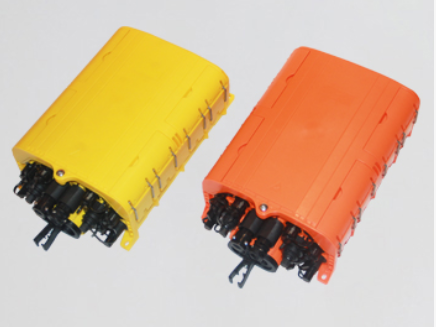2024: Understanding the Fiber Optic Hub Box for FTTH Applications

Fiber Optic Hub Box
In 2024, the demand for Optical fibre distribution networks (ODNs) and Fibre termination units (FTUs) is rapidly increasing, underscoring the importance of understanding the Fiber Optic Hub Box. This pivotal component plays a crucial role in FTTH applications, enabling efficient connectivity and signal distribution within optical fibre networks.
Keywords Usage:
Fiber Optic Hub Box
FTTH Applications
FTTH Network Architecture
In the realm of FTTH applications, the network architecture plays a pivotal role in ensuring seamless connectivity and efficient data transmission. The capacity and design of FTTH networks are meticulously planned to accommodate the ever-increasing demand for high-speed internet and digital services. One of the key components of this architecture is the Passive Optical Network (PON), which forms the backbone of FTTH systems. PON architecture allows for the distribution of optical signals to multiple end-users without active electronic components, thereby reducing power consumption and enhancing reliability.
Benefits of FTTH
The advantages of FTTH over traditional copper-based networks are substantial. With FTTH applications, users can experience significantly higher internet speeds, lower latency, and enhanced reliability. Additionally, the deployment of FTTH has a profound impact on high-speed internet access and digital services, enabling seamless streaming, online gaming, video conferencing, and other bandwidth-intensive activities. This technology also future-proofs network infrastructure, making it adaptable to emerging technologies and increasing bandwidth demands.
Components and Installation
Fibre Optic Hub Box Design
When it comes to the design of the Fibre Optic Hub Box, it encompasses a set of crucial components that facilitate its functionality within the Optical fibre distribution network. The box is engineered to house and protect sensitive optical equipment, including splitters, connectors, and terminations. Its design ensures efficient signal distribution and connectivity within FTTH applications.
The installation process of the Fibre Optic Hub Box involves careful consideration of its placement within the network infrastructure. It is strategically positioned to optimize signal transmission and accessibility for maintenance purposes. The design and installation of the box are pivotal in ensuring the seamless operation of FTTH networks.
Fibre Splicing Techniques
Precise fibre splicing techniques are paramount in FTTH installations to ensure optimal connectivity and minimal signal loss. Fusion splicing, one of the primary methods employed, involves joining two optical fibres by melting their ends together using an electric arc. Mechanical splicing offers an alternative approach, utilizing alignment fixtures and index matching gels to achieve a low-loss joint.
Exploring these different methods underscores the significance of precise fibre splicing techniques in maintaining the integrity and efficiency of FTTH networks.
Maintenance and Standards
Cable Management
Effective cable management is a critical aspect of maintaining an organized and secure infrastructure within Optical fibre distribution networks. Proper cable management not only ensures the neat and orderly arrangement of cables but also facilitates easy access for maintenance and troubleshooting. By implementing best practices such as labelling cables, using cable ties and trays, and employing suitable routing techniques, FTTH networks can significantly reduce the risk of signal interference and equipment damage.
Furthermore, well-managed cables contribute to a safer working environment by minimizing tripping hazards and facilitating efficient identification of specific cables during maintenance or upgrades. This approach not only enhances the overall reliability of the network but also streamlines operational processes, leading to improved service delivery and customer satisfaction.
Compliance with Communication Standards
Adhering to fibre optic communication standards is imperative for seamless operations within Optical fibre distribution networks. Understanding and complying with industry regulations ensures that FTTH networks meet the necessary performance benchmarks while maintaining compatibility with various communication protocols. Compliance with these standards also guarantees the reliability and interoperability of network components, ultimately enhancing the quality of service delivered to end-users.
By aligning with established communication standards, FTTH operators can build robust, future-proof networks that support emerging technologies while upholding the highest levels of performance and security.
Understanding FTTH Technology
Key Components of FTTH Technology
In comprehending FTTH technology, it is essential to highlight the key components that contribute to its seamless operation. The Fibre termination unit serves as a vital interface between the optical fibre distribution network and the user's premises, facilitating the efficient termination and management of optical fibres. Additionally, adherence to fibre optic communication standards ensures interoperability and reliability across various network components, guaranteeing high-quality service delivery. Understanding these fundamental elements is pivotal in harnessing the full potential of FTTH technology for unparalleled connectivity and data transmission.
See Also
Attaining Superior Performance and Economical Fiber Optic Connectivity
Simplifying Setups: FiberHome Flat Drop Cable
Comprehending FTTR Concealed Fiber Cable: A Revolutionary Solution
The Function of Fiber Optic Cables in Belowground Installations
Investigating the Advantages of IP67 Watertight FTTX Solutions


